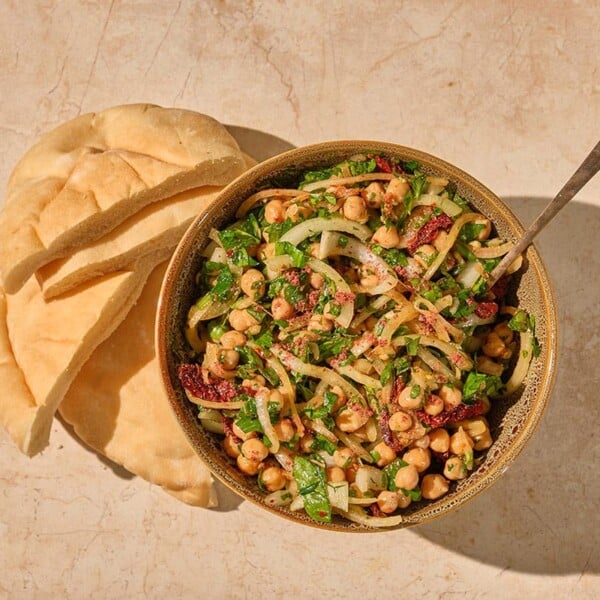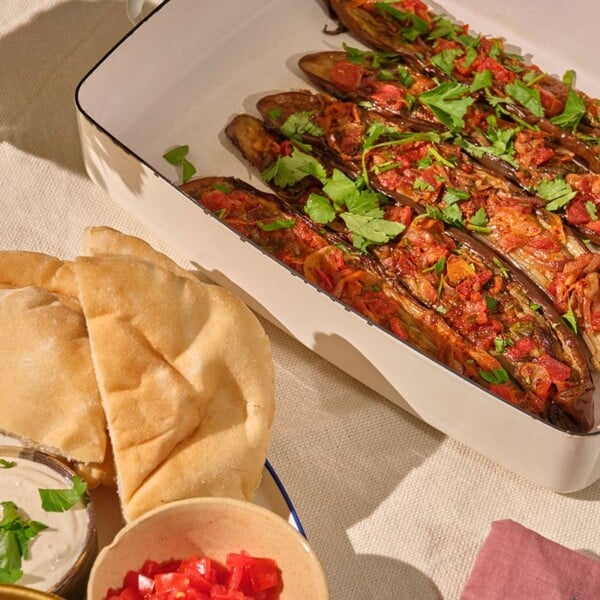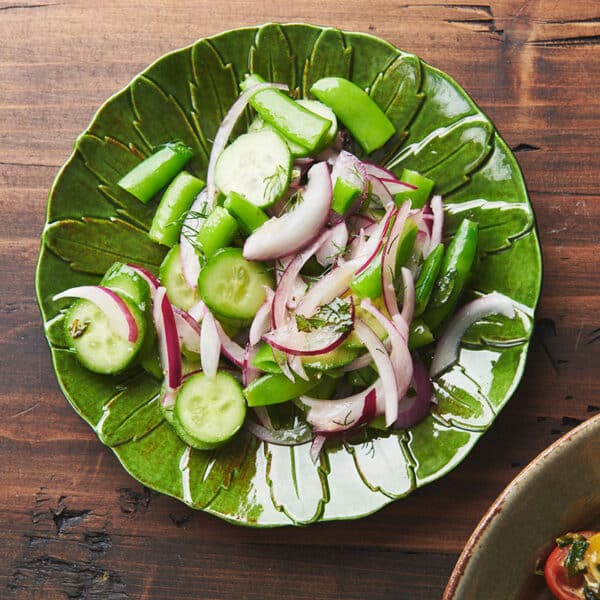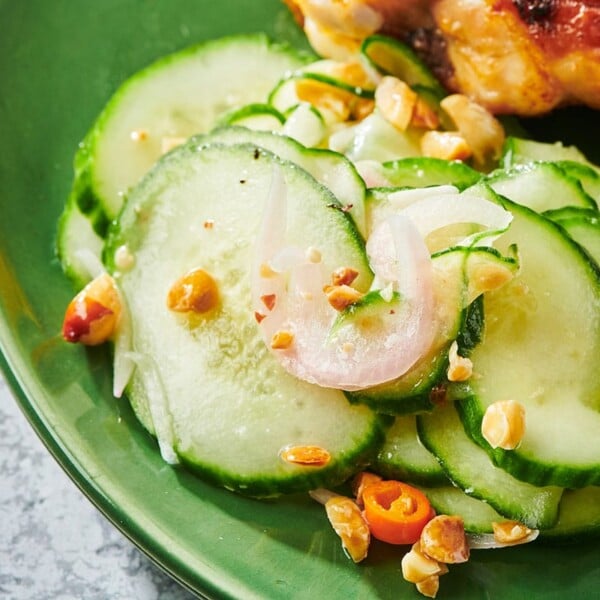Turkish Cucumber Salad
on Sep 06, 2023, Updated Jan 02, 2025
This post may contain affiliate links. Please read our disclosure policy.
This salad, also known as Shepherd's Salad, is fresh and crunchy with a vibrant dressing. It goes beautifully with all kinds of Middle Eastern or Mediterranean dishes.
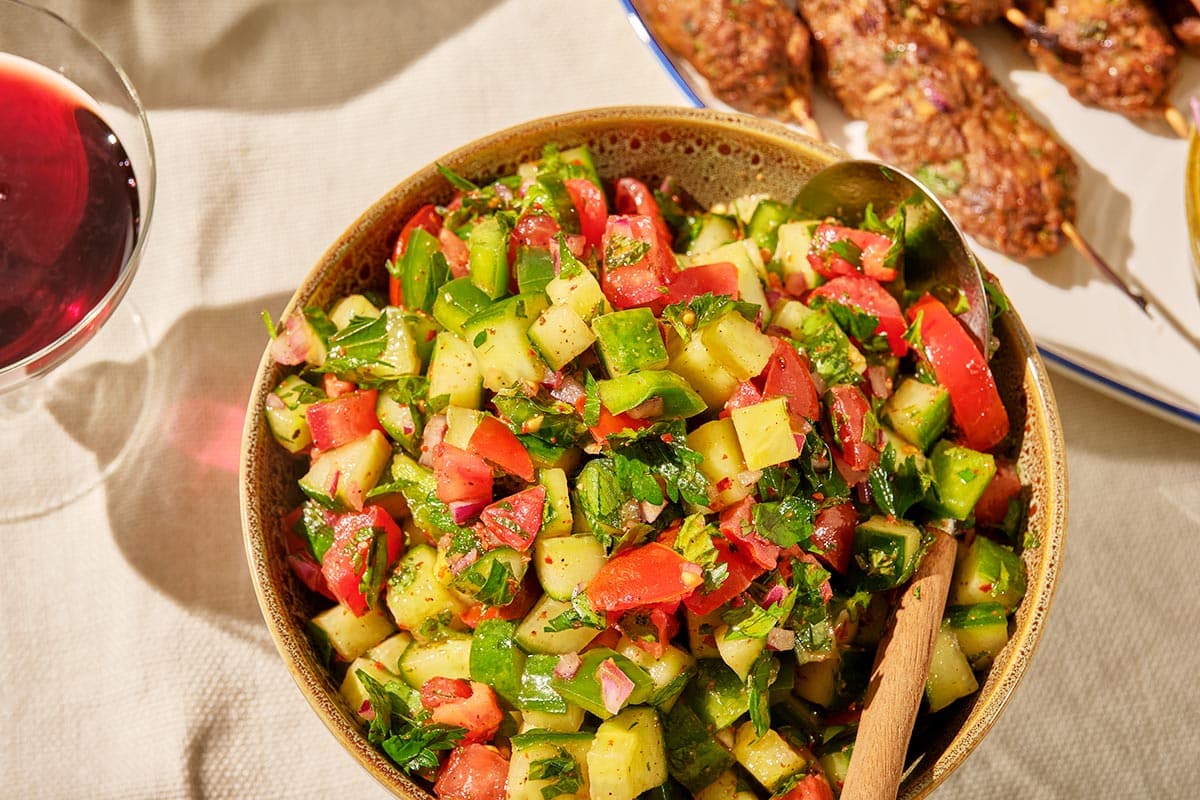
This Turkish Cucumber Salad, also known as Shepherd’s Salad, is one of the mainstays of Turkish food life. Versions of this salad appear all throughout the Middle East and the Mediterranean. I have eaten similar salads in Israel and Greece, though the seasonings vary somewhat. But in the Turkish version, the vegetables are brightened with the addition of some very Turkish spices, sumac, and Aleppo pepper. You might see it called coban salatasi. It’s also vegan and can be made in about 15 minutes! Serve it with Grilled Swordfish, Baked Chicken Thighs, Lamb Koftes, or Chicken Kawarma.
My friend and the photographer of these lovely images, Rana Duzyol, said that in Turkey, this is often eaten for breakfast, and I am so down with that. I love leftover salad, and I love salad for breakfast. And because this salad doesn’t contain lettuce, it holds up quite well. The tomatoes will release more juice, but just give it a toss, and you will be ready to dig back in! The ingredient list is fairly short, but the salad is filled with vibrant flavors.
By signing up, you agree to our Privacy Policy.
What's In This Post?
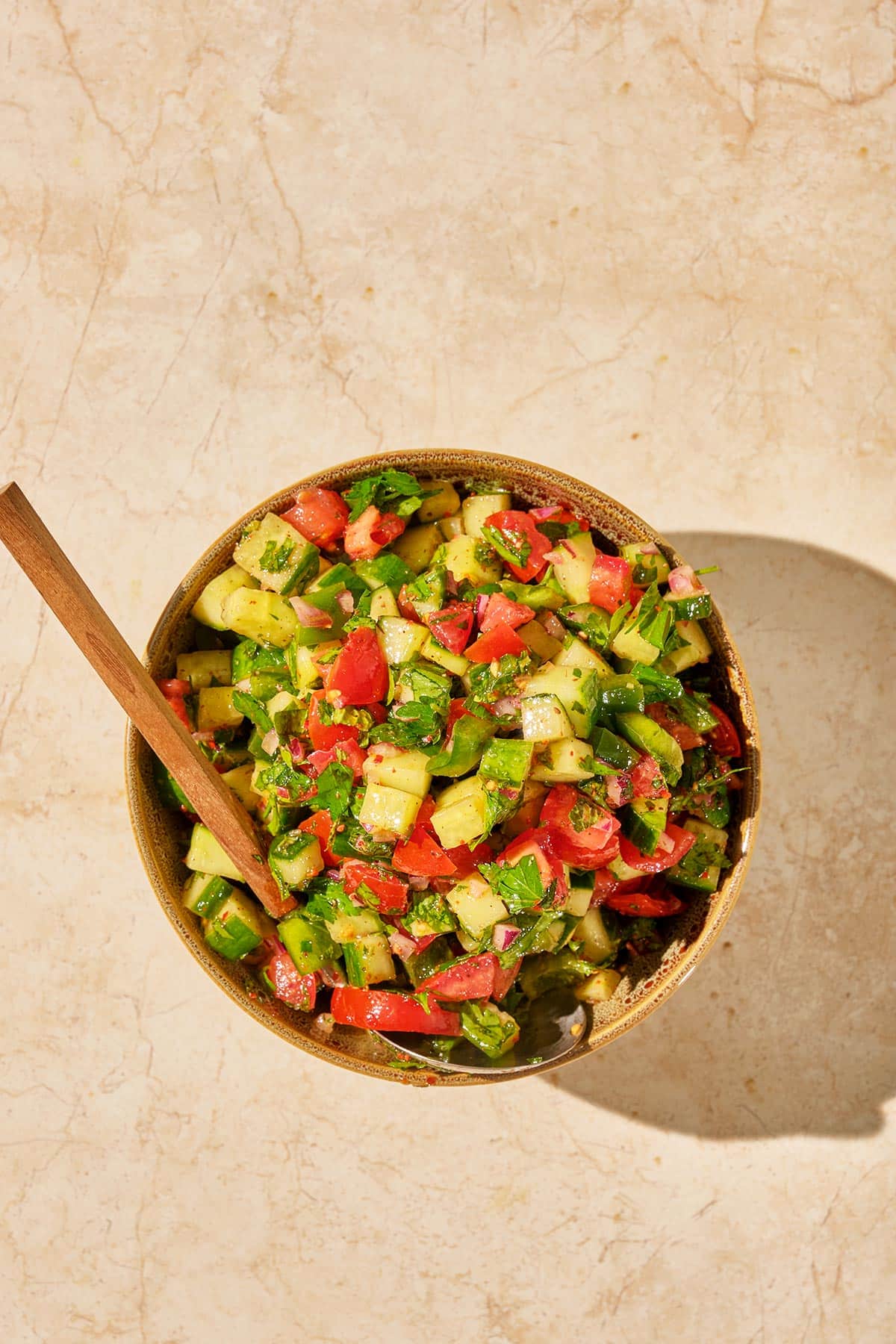
Turkish Cucumber Salad: This salad, also known as Shepherd’s Salad, is fresh and crunchy with a vibrant dressing. It goes beautifully with all kinds of Middle Eastern or Mediterranean dishes.
Shepherd’s Salad
It’s called Shepherd’s Salad because this dish, along with bread, was the mainstay lunch for Turkish shepherds and made with readily available and inexpensive ingredients. Tomatoes, cucumbers, and peppers have always been plentiful in that region of the world.
I would hope there was also a chunk of sheep’s milk cheese to eat alongside this salad. That would be a pretty terrific lunch, maybe with a side of hummus. I saw some recipes that suggested feta as an ingredient, but Rana says that this addition is much more Greek than Turkish.
Ingredients
Dressing – The dressing is a very simple blend of olive oil and lemon juice, and kosher salt, with the addition of two spices quintessential to Turkish cuisine:
- Sumac – This red powdery spice is an astringent ingredient used in much of Turkish and Middle Eastern cooking. It is tart, sharp, and floral, someone lemony in flavor. Sumac is related to the cashew family, so be aware of that if there are nut allergies in your household. Ground coriander is the most appropriate substitution, though the flavor will, of course, be different. You can also leave it out.
- Aleppo pepper – The flavor of Aleppo pepper is a bit fruity, a bit earthy (like cayenne), and has a mild to medium level of heat. If you don’t have sumac, you can substitute in a blend of sweet paprika and cayenne pepper, about half of each.
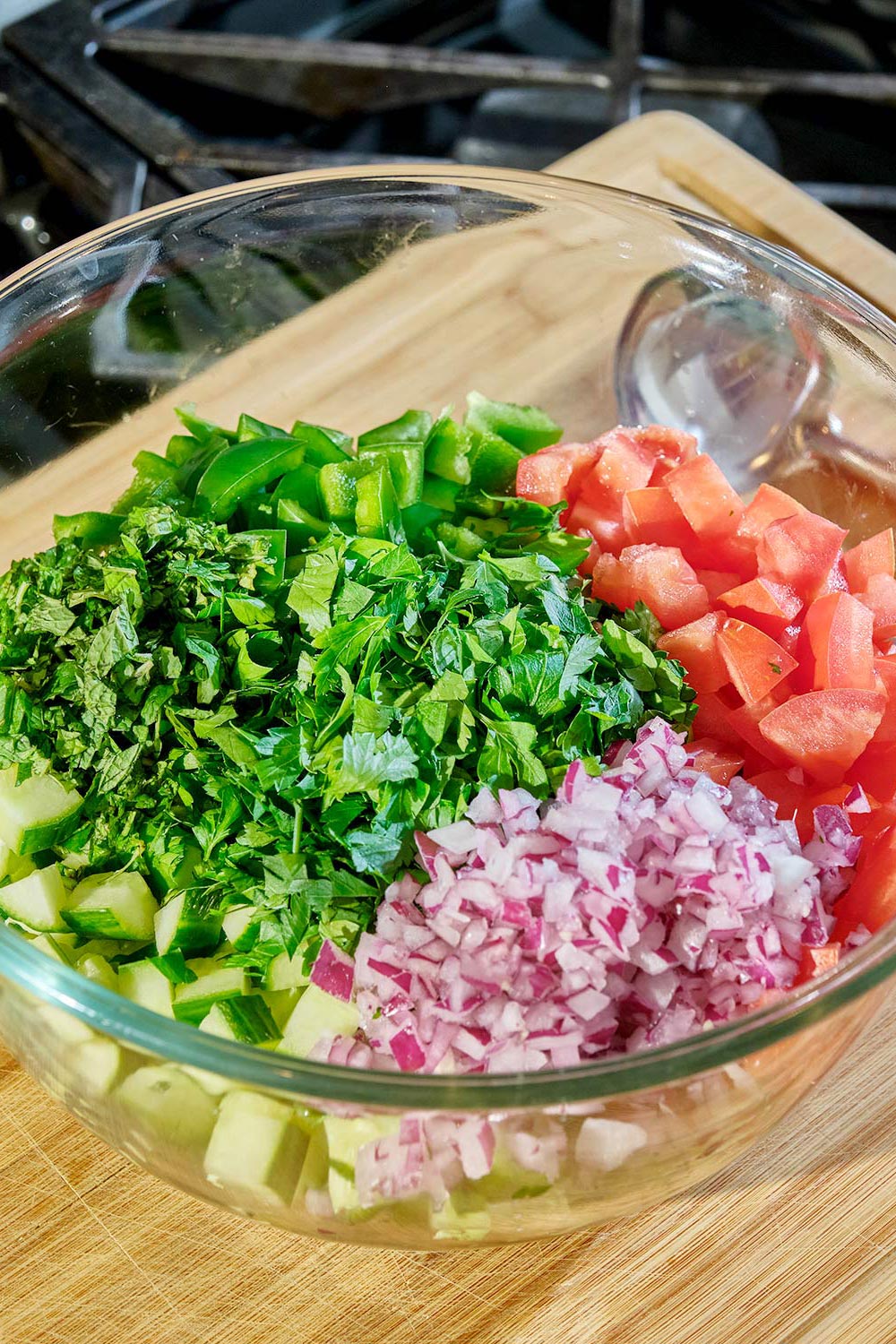
- Tomatoes – You want tomatoes that are ripe but still firm, so they hold up well, especially if you are planning to make this several hours or a day ahead of time. Remove as many of the seeds as possible for the best texture and staying power.
- Cucumbers – I like to use seedless cucumbers, which also might be labeled Persian cucumbers or English cucumbers. Mini cucumbers are also good, with fewer seeds and a nice firm texture. Use about 6 of them instead of the two larger cucumbers.
- Bell pepper – Green is the most typical color of bell pepper used in this salad, but you can use another color, like red, orange, or yellow, if you like. Those will be sweeter than the green variety, which is a bit bitter, though often less expensive and more available.
- Onion – I love red onion for its vibrant color, but yellow or white will work just as well.
- Fresh herbs – A combination of mint and a generous amount of parsley brings a burst of freshness to this dish. Fresh herbs are an integral part of Middle Eastern and Mediterranean cooking, especially in the salads, and you really cannot substitute dried here.
How to Make Turkish Cucumber Salad
- Prep the ingredients: Combine the olive oil, lemon juice, sumac, Aleppo pepper, and salt. In a large bowl, combine the tomatoes, cucumbers, bell pepper, onion, parsley, and mint.
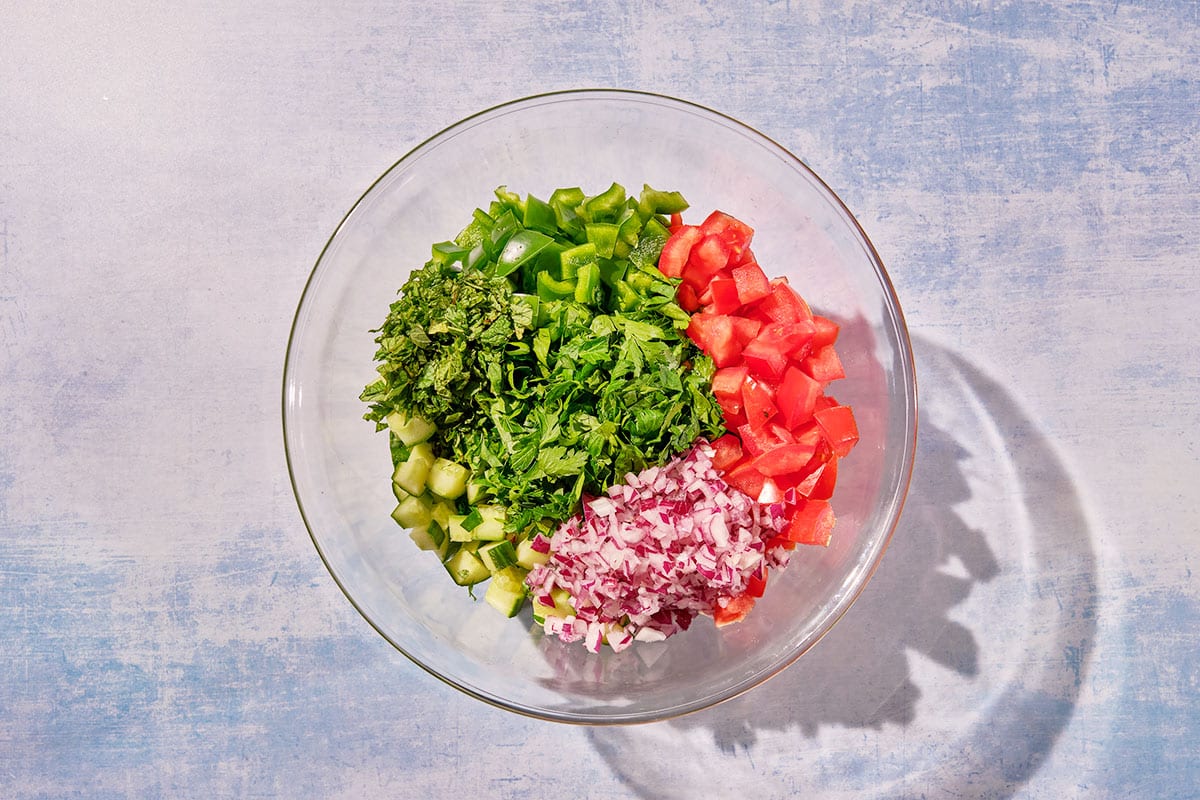
- Combine and toss: Pour the dressing over the veggies and herbs and toss. Refrigerate for 1 hour, if possible, before serving. It is best eaten the day it is made, but it can be eaten up to 2 days after making.
- Serve: This salad is great with bread (any kind of pita or flatbread is great) to soak up the delicious dressing and juices from the tomatoes.
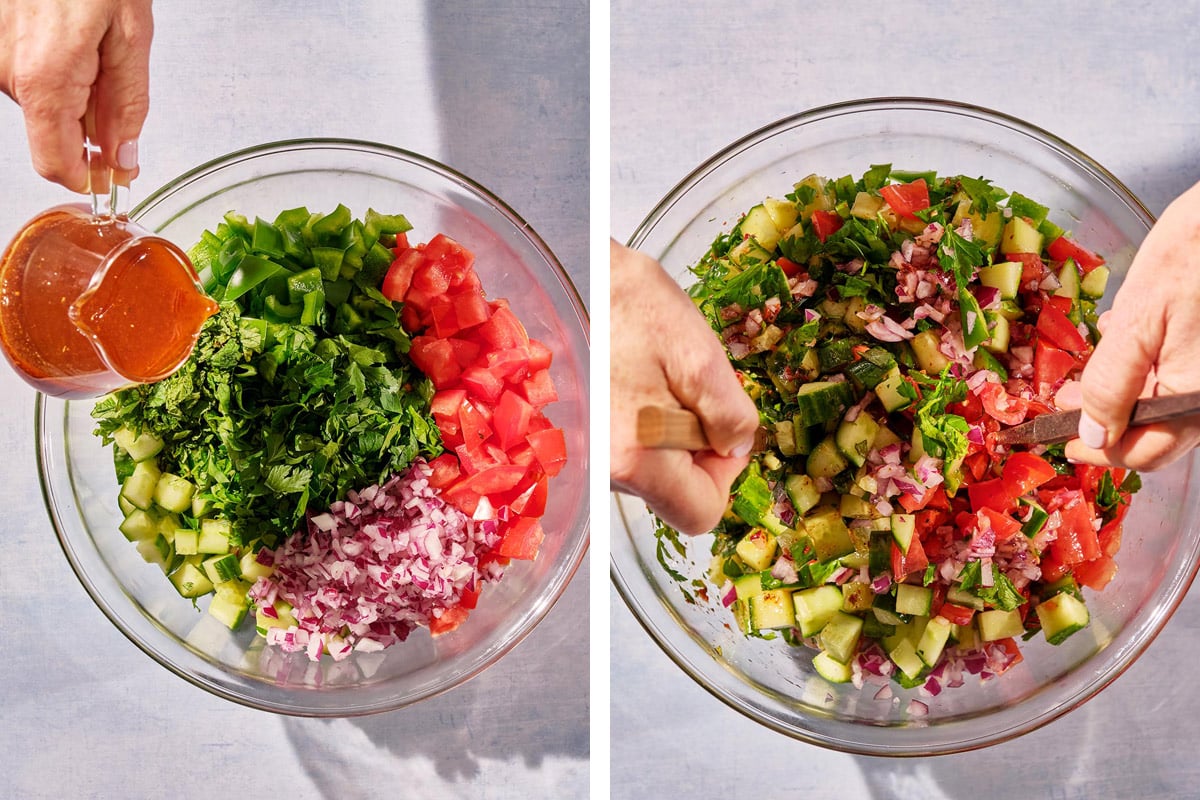
Make-Ahead and Storage
This salad should be refrigerated for an hour before serving to allow the dressing to flavor the vegetables. It will keep for up to 2 days in the fridge, covered, though the tomatoes will collapse a bit and release more of their juices.
You can dice all of the ingredients a day ahead of time and store them in the fridge. Cut the tomatoes shortly before adding them, and if possible, never refrigerate whole tomatoes, which can make them mealy.
You can also make the dressing up to a day ahead of time.
What to Serve With Turkish Cucumber Salad
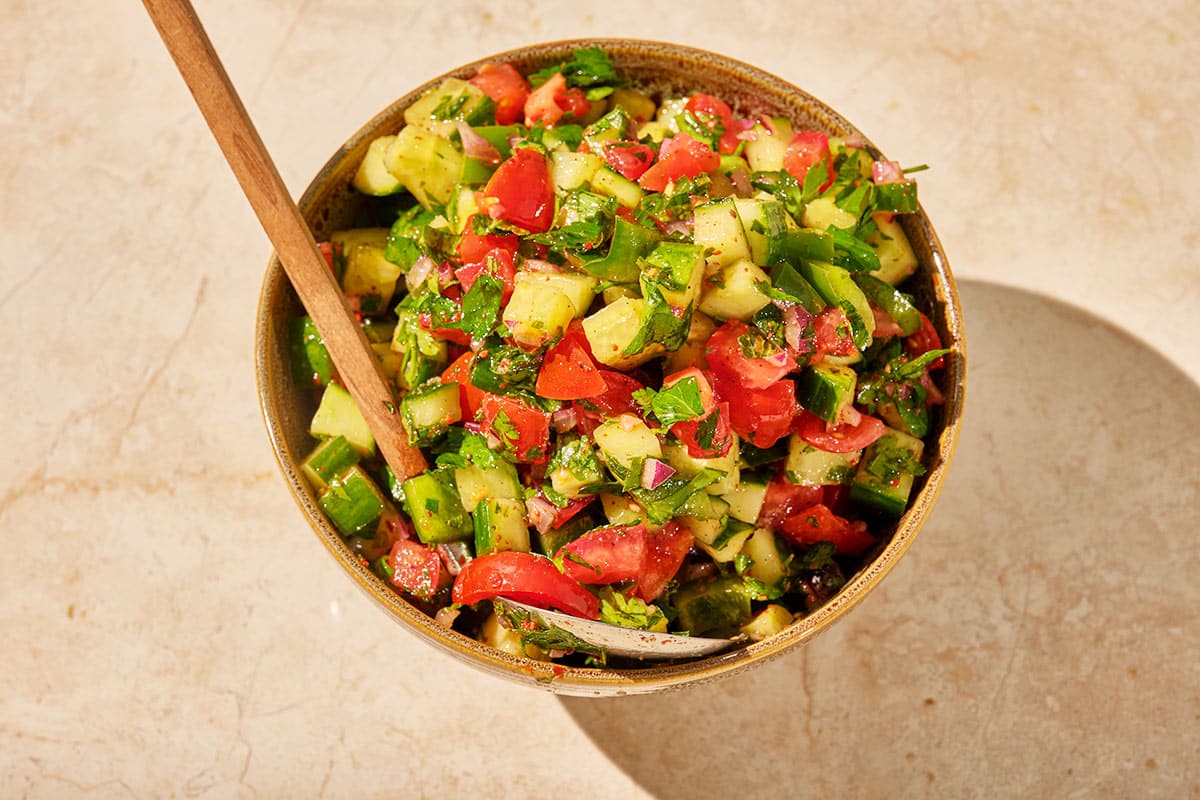
More Cucumber Salads
- Creamy Cucumber Salad
- Japanese Cucumber Salad
- Vietnamese Cucumber Salad
- Greek Tomato and Cucumber Salad
- Tomato, Avocado, and Cucumber Salad
Pin this now to find it later
Pin It
Turkish Cucumber Salad
Ingredients
For the Dressing:
- ¼ cup extra-virgin olive oil
- 3 tablespoons fresh lemon juice (please use fresh!)
- 2 teaspoons sumac (see Note)
- 2 teaspoons Aleppo pepper (see Note)
- 1 teaspoon kosher salt
For the Salad:
- 4 large tomatoes (cored, seeded and diced)
- 2 large seedless cucumbers (unpeeled and diced)
- 1 green bell pepper (cored, seeded, and diced)
- 1 large red onion (diced)
- 1 cup roughly chopped fresh flat-leaf parsley
- ½ cup roughly chopped fresh mint leaves
Instructions
- In a small container or bowl, combine the olive oil, lemon juice, sumac, Aleppo pepper, and salt.
- In a large bowl, combine the tomatoes, cucumbers, bell pepper, onion, parsley, and mint. Pour the dressing over and toss. Refrigerate for one hour, if possible, before serving. It is best eaten the day it is made, but it can be eaten up to 2 days after making.
Notes
- This salad should be refrigerated for an hour before serving to allow the dressing to flavor the vegetables. It will keep for up to 2 days in the fridge, covered, though the tomatoes will collapse a bit and release more of their juices.
- You can dice all of the ingredients a day ahead of time and store them in the fridge. Cut the tomatoes shortly before adding them, and if possible, never refrigerate whole tomatoes, which can make them mealy.
- You can also make the dressing up to a day ahead of time.

